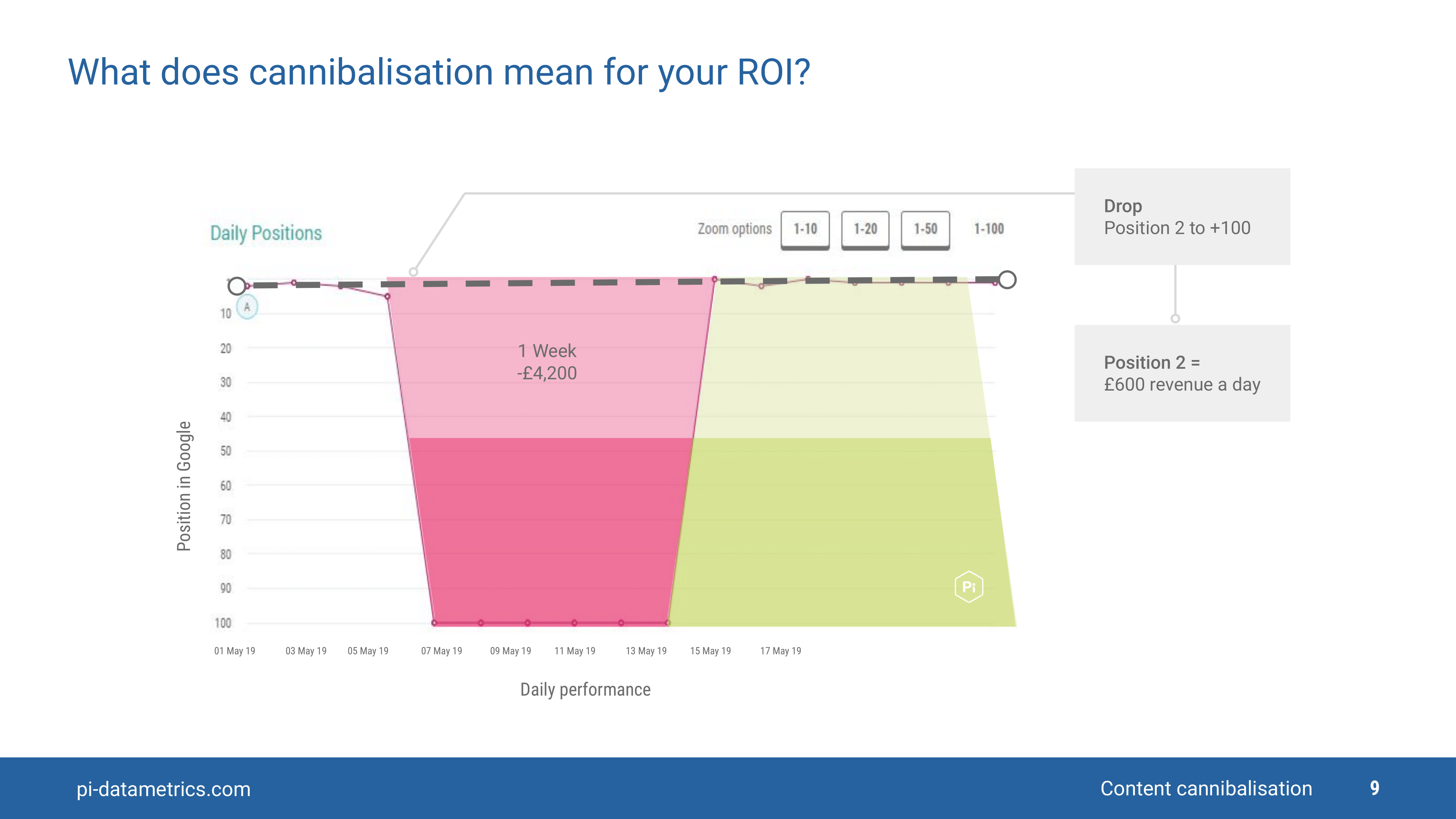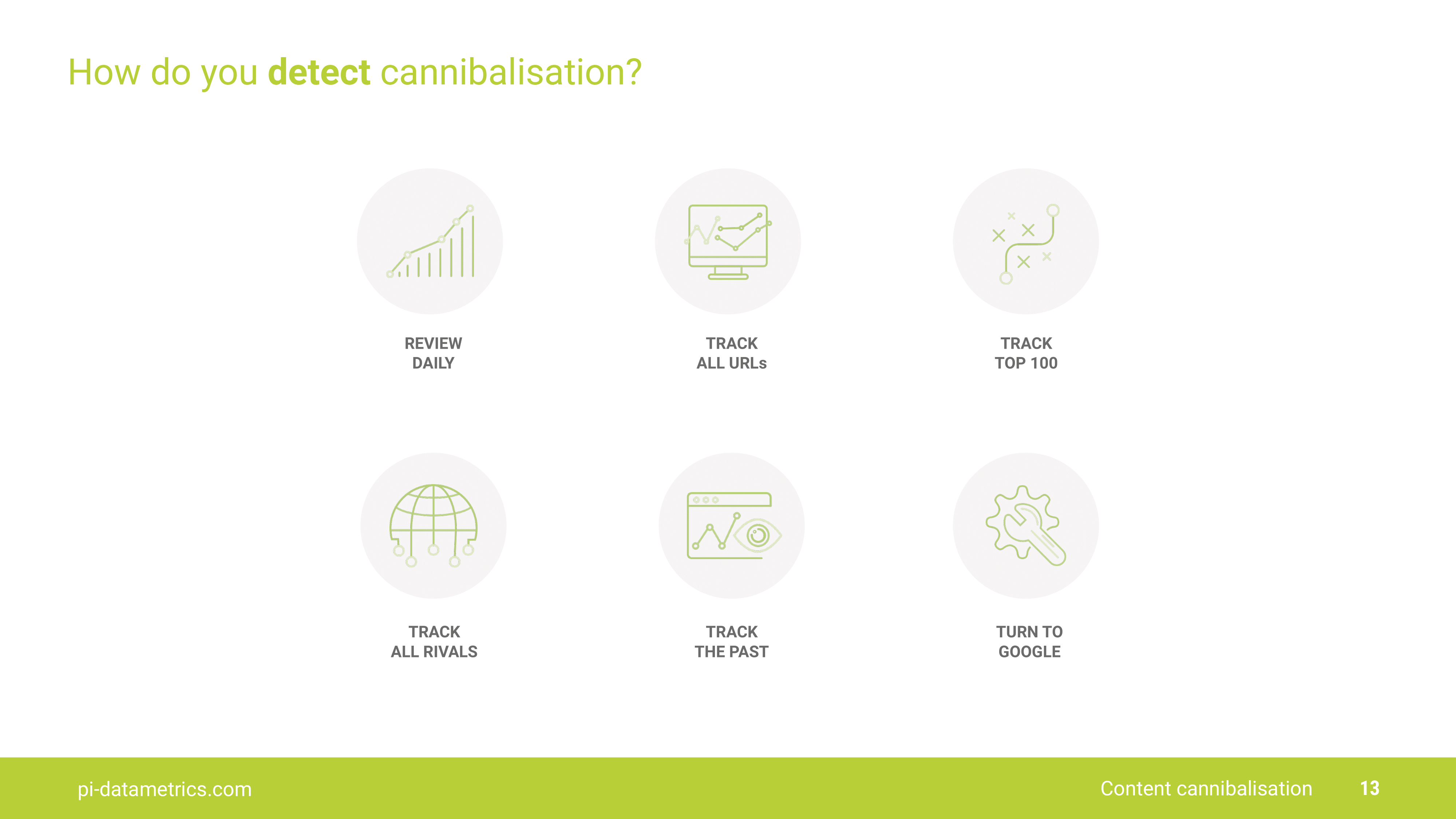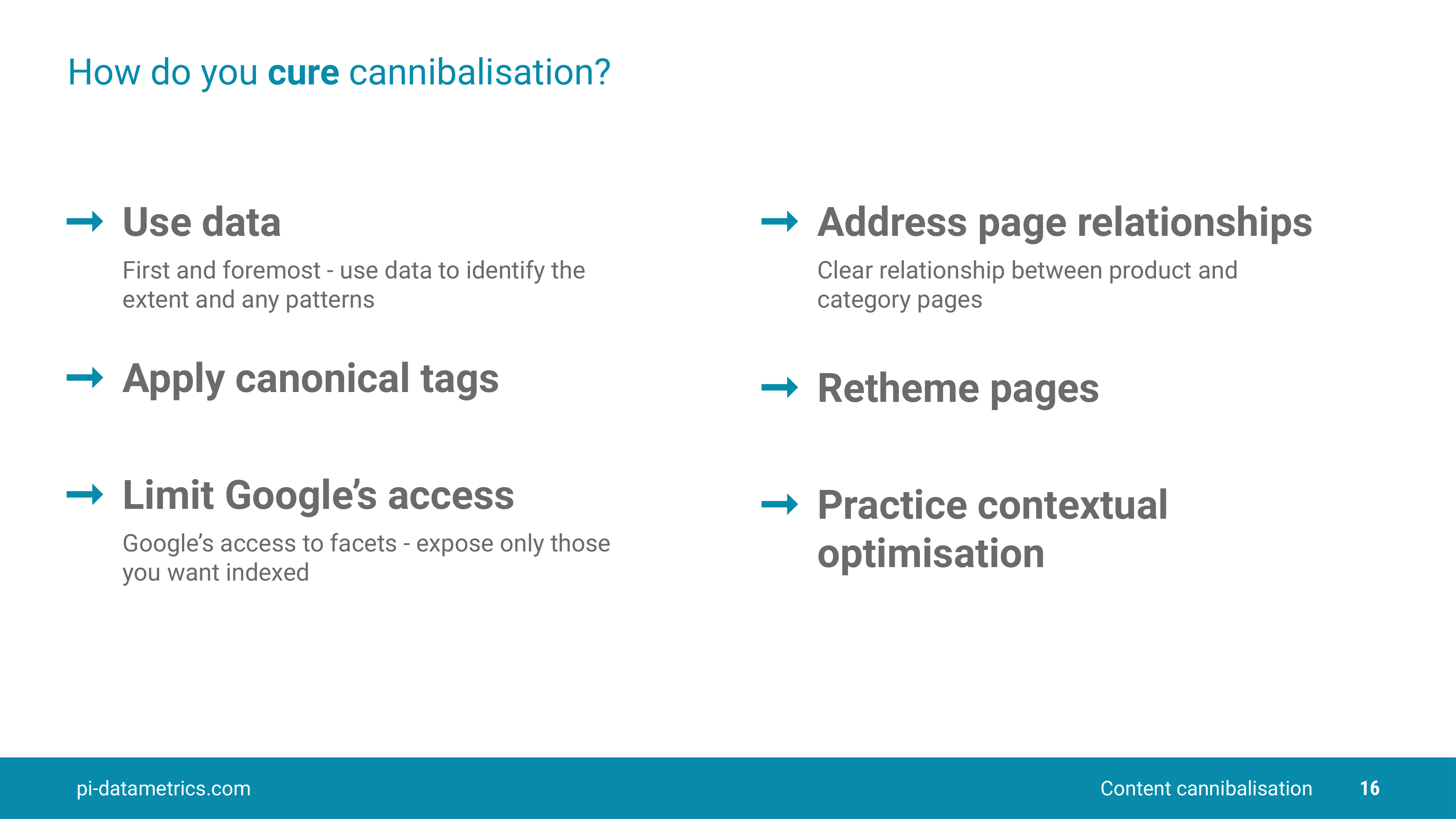Duplicate content SEO: How to deal with it
09 Nov 2021|5 MIN READ
There are so many reasons as to why your content could lose visibility in Google. A technical SEO error, a failure to appease the notorious Google algorithm. But one of the most common reasons that we lose visibility is because of duplicate content or cannibalisation.
How to deal with duplicate content
Duplicate content SEO
In this article I’ll look at:
- What is duplicate content?
- Why is duplicate content a problem?
- How can you detect duplicate content?
- How can you cure duplicate content?
And in a future episode, I’ll dive into ‘Contextual Optimisation‘ my tried-and-tested three-step approach to prevent duplicate content!
What does duplicate content mean?
Duplicate content occurs when you have multiple bits of content that are similarly themed and haven’t made it explicitly clear to Google which piece you want to rank.
As a result, Google simply can’t decide which piece of content to return.
There are three main types of conflict that occurs as a result of duplicate content: internal keyword cannibalisation, SEO subdomain cannibalisation and international SEO conflict.
But today, we’re just going to focus on the most common kind of conflict: Internal conflict.
Does duplicate content really matter?
The short answer is yes. It really does.
Having duplicate content can confuse Google so much that it will pull down your site rankings. If Google can’t decide which content to serve, it will flit between the two (or more), ultimately never giving one piece of content enough time to rise any higher in the SERPs. This is known as the ‘Glass ceiling effect’.
If duplicate content is stopping you from performing well in Google, then you’ll not only see your traffic fall, but also your revenue. The example below illustrates this.
What does duplicate content look like and what does it mean for your ROI?
Having duplicate content can seriously affect your ROI, especially if the cannibalised content in question is a ‘Money page’. If your ‘Money page’ can’t rank, then the traffic you’re missing out on will also be revenue you’re missing out on.
In this example, shown in Pi’s Keyword Rank Tracking, this site dropped from position 2 to below position 100 between May 6th and May 15th.

This page is a money page that brings in an average of £600 revenue a day in position 2 of Google for one of its key search terms.
Due to cannibalisation, it lost a week’s worth of visibility, resulting in a revenue loss of £4,200.
What often happens in these kinds of scenarios, is that the site in question takes a hit without knowing why.
They either have no visibility, or only a weekly view of performance, meaning they would see two datapoints: one in the 1st week and one in the 2nd week, which would just show as a straight line.
Does Google penalise for duplicate content?
There’s an enduring myth that Google penalises sites that have duplicate content issues. While Google does take the view that the use of duplicate content may not always be unintentional, it does not purposefully penalise for duplicate content. Any negative effects of duplicate content come from the confusion caused to Google’s algorithm.
How can you detect duplicate content?
- Review daily – You can detect duplicate content by reviewing your performance daily rather than weekly. With weekly data you run the risk of only seeing two data points from one week to the next which may appear as a straight line – i.e. steady performance. Whereas with daily data, you can see which content is being served at any point throughout the week, and subsequently identify any dips in visibility. At Pi we setup daily SEO alerts to track any drastic movement of our content, meaning we can instantly mitigate the risk of duplicate or cannibalising content.
- Track all URLs and domains – Tracking any URL and domain is the best way to see the performance of your whole site and spot any conflict. Being able to track subdomains and other URL types which often spawn duplicate content, is imperative. At Pi, we use the conflict detector to identify instances of duplicate content, where multiple URLs are returning for a single search term.
- Track top 100 – Being able to see the top 100 returning results from Google will enable you to see where cannibalisation is actually happening. We’ve seen duplicate content cause cannibalisation all the way from page 1 to page 100.
- Track all rivals – It may be that a competitor is using some of your content, or more innocently, an affiliate – a product description for example.This other form of duplicate content can cause your rankings to dip.
- Track the past – Having a view of the past will help you identify trends and patterns of conflict. This can help you identify the cause and how to solve it.
- Turn to Google – Start using site operators and adopt a process of contextual optimisation – this essentially involves taking into consideration the content you’ve already created in your ecosystem, theming each piece uniquely and linking it all together appropriately.

How do I fix duplicate content issues?
Once you’ve identified the duplicate content on your site, there are a few steps you should take to fix the issue:
- Use data -First and foremost, use data to identify the extent of your duplicate content, and identify any patterns.
- Canonical tags – Apply canonical tags appropriately.
- Limit Google’s access – Limit access to facets, exposing only those you want Google to index.
- Address the relationship between pages – Once you’ve chosen the main page you want to return, you need to think about how your other pages will relate to it. Make sure you have carefully planned out internal linking between all your similarly themed content.
- Retheme pages if necessary – If you have content that is just too similar, then think about retheming some of the pages that are conflicting.
- Practice contextual optimisation
Thanks for reading and / or watching – I hope you found the above useful! For those of you who are struggling with duplicate content, or simply want to prevent it, feel free to Download our complete guide to cannibalisation, and hopefully your content will be tip top in no time!
Cannibalisation: Your complete guide
Watch my SEO in the Shed video on Duplicate content in SEO with Alina Ghost
Duplicate content in SEO is a huge factor affecting revenues – and it’s no longer just an issue affecting our visibility in classic listings on Google…
And for more tips and takeaways, you can do one of a few things:
- Subscribe to my monthly Shed News email, where I’ll be sharing all my latest content!
- Subscribe to Pi Datametrics’ YouTube channel for my upcoming videos – which I’ll be posting regularly!
- And, finally, follow me on Linkedin or Twitter.
Want to uncover every instance of keyword cannibalization across your domains and subdomains? Explore our Keyword Cannibalization Tool to see where conflicts are costing you visibility and how to fix them.
Never miss a post
Join our mailing list and have our SEO news delivered straight to your inbox.






